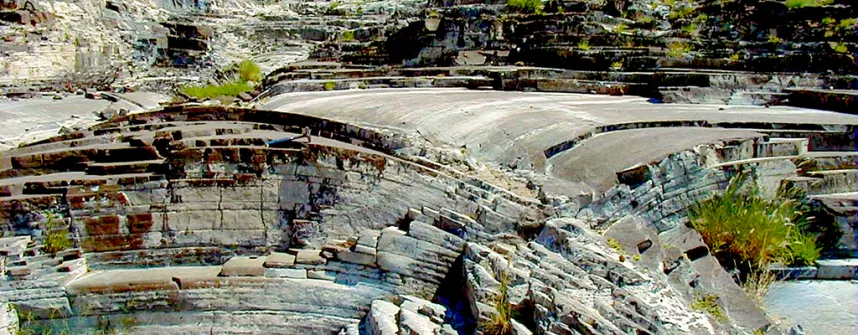Rare Earth Elements and the evolution of the atmosphere and oceans in Earth’s early history
March 11, 2021
In recent years, public awareness for Rare Earth Elements has risen as they are critical raw materials for high technologies as well as emerging environmental pollutants. They also provide a wide range of information in basic research, for example about the evolution of the oceans and the atmosphere in the early history of the Earth. Between 2,440 and 2,330 million years ago, the oxygen content of the Earth’s atmosphere and oceans increased significantly. In several recently published studies, geochemists at Jacobs University Bremen show how this environmental change is tracked with the help of Rare Earth Elements contained in rock formations and can thus be more precisely dated.
During the early days of the Earth, there was no free oxygen neither in the atmosphere nor in the oceans. "However, all living creatures were so perfectly adapted to these conditions that oxygen was even poisonous for them and a greater threat than the increase in carbon dioxide is for us today," said Michael Bau. Together with his colleagues Katharina Schier, David Ernst and Timmu Kreitsmann, the Professor of Geochemistry at Jacobs University examined rocks that formed on the seafloor of Ancient oceans up to 2,700 million years ago. "For the first time ever, rocks from Antarctica were included in such studies, in addition to samples from Brazil, South Africa and Russia," Ernst emphasized.
These archives for the distribution of Rare Earth Elements in seawater show that a large proportion of these elements in the oceans of Early Earth originated from more than 250 degree Celsius hot springs (“black smokers”) on the seafloor. As a result, the element europium accumulated to a greater extent than other Rare Earth Elements. The Earth's interior then increasingly cooled down, and the importance of the hot solutions gradually declined. About 2,440 million years ago the europium enrichment had disappeared and since then it is only observed locally in connection with volcanic activity. There was hardly any oxygen in the atmosphere and in the ocean at that time and the element cerium, therefore, was washed from the continents into the sea together with all the other Rare Earth Elements.
But then fundamental changes occurred: About 2,410 million years ago, for the first time in Earth's history, large amounts of the heavy metal manganese were deposited on the ocean floor as manganese oxide. Today, this manganese forms the basis for the world's largest manganese deposits in the Kalahari Manganese Field in South Africa. Obviously, the oxygen content in seawater had increased significantly.
But what happened on the mainland? "Here, too, the Rare Earth Elements are helping us because for the first time seawater was now depleted in cerium, and this requires a high oxygen content in the atmosphere,” said Schier. As a result, the cerium was oxidized during weathering on land, retained in soils and weathering crusts, and was no longer carried by rivers into the sea. The Rare Earth Elements thus reveal that the sharp increase in oxygen levels, a phenomenon that geoscientists call the “Great Oxidation Event”, affected not only the oceans but also the atmosphere and hence the landmasses.
What happened after the Great Oxidation Event is still a matter of debate. It is still unclear whether the oceans became poor in oxygen again, in contrast to the oxygen-rich atmosphere. However, Rare Earth Elements in 2,000-million-year-old rocks from northwestern Russia, with their depletion of cerium, indicate that the changes were rather small. "The atmosphere and at least the surface waters of the oceans were also rich in oxygen at that time and life evolved that depended on that oxygen, just as we do today,” Kreitsmann said.
The research project involved scientists from nine different countries. "Global changes can only be recognized and understood through international cooperation," emphasized Professor Bau. His research group combines basic research on critical high-tech metals such as Rare Earth Elements, scandium and gallium, which are essential for electromobility, the energy transition and digitization, with applied research on their deposits and their behavior in the environment.
Link to the studies:
https://www.jacobs-university.de/directory/mbau
Questions are answered by:
Prof. Dr. Michael Bau
Professor für Geochemie
Tel: +49 421 200-3564
Email: m.bau [at] jacobs-university.de
